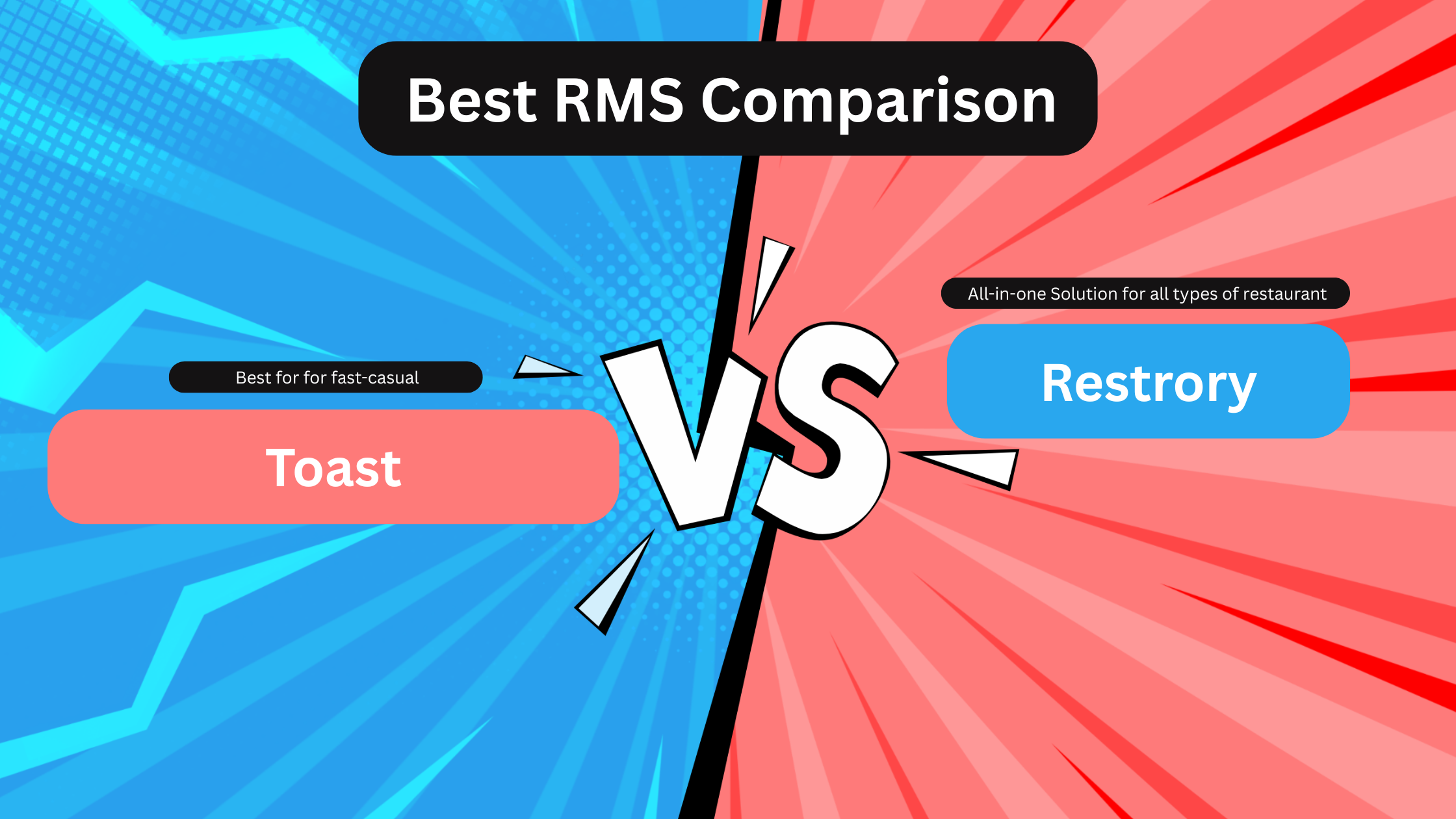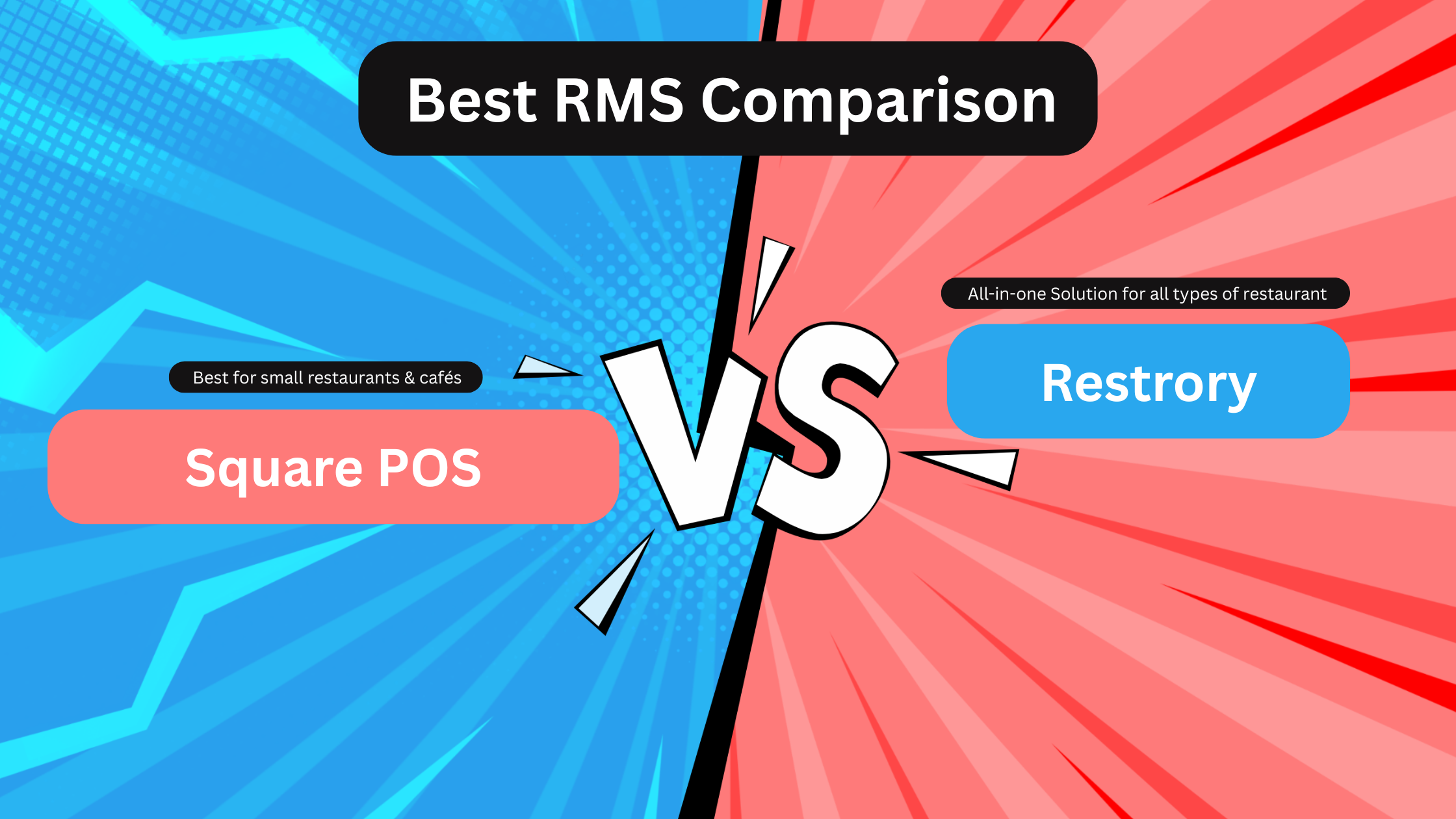Restrory vs Toast: Best Toast Alternative
Restrory and Toast are two powerful restaurant management systems designed for modern dining businesses. While Toast shines in fast-casual and delivery-focused operations, Restrory stands out as an all-in-one solution with smart automation, real-time analytics, and multi-location control.

Key Takeaways
Restrory is the best choice for an all-in-one restaurant management system.
Toast POS works well for fast-casual or delivery-heavy restaurants.
Pricing and features vary depending on restaurant size and needs.
Multi-location support, reporting, and ease of use are key deciding factors.
I tested both Restrory and Toast POS over several weeks in different restaurant setups. My goal was to see which platform truly simplifies operations and offers the most value.
While both are strong contenders, each has unique strengths that make it better suited for specific restaurant types. This comparison will help you make an informed choice.
Quick Comparison Table
Feature / Factor | Restrory | Toast POS | Notes |
POS & Order Management | Full-featured, intuitive | Fast order entry, delivery-friendly | Restrory covers more functions in one platform |
Inventory Management | Ingredient-level tracking | Basic to intermediate | Restrory stronger for multi-location |
Staff Management | Scheduling, roles, performance | Scheduling, payroll integration | Toast integrates payroll, but less centralized |
Reporting & Analytics | Real-time sales, inventory, staff | Sales, labor, and inventory | Restrory provides more granular insights |
Multi-location Support | Full support | Limited unless on higher-tier plans | Restrory easier for chains |
Online Ordering & Delivery | Built-in | Excellent delivery integration | Toast specializes in delivery-heavy operations |
Overview of Restrory
I’ve spent several weeks using Restrory, and I was impressed by its all-in-one design. Setting up the system was straightforward, and all major functions—POS, KDS, inventory, staff management—felt connected.
Navigation is intuitive, making training staff quick and stress-free. Overall, it delivers a complete solution for restaurants of any size.
Key Features:
POS System: Fast order processing, table management, real-time sales tracking
Kitchen Display System: Instant order updates, preparation timers, status tracking
Inventory Management: Automated stock tracking and supplier management
Staff Management: Schedules, roles, and performance monitoring
Analytics & Reports: Real-time insights into sales, inventory, and staff
Multi-Restaurant Support: Manage multiple locations from one dashboard
Pros:
Complete all-in-one system
Intuitive and easy to use
Strong analytics and reporting
Excellent for multi-location management
Cons:
Some advanced features require higher-tier plans
Limited offline capabilities
My Verdict on Restrory
For me, Restrory offers the most comprehensive and practical solution. Its balance of usability, powerful features, and scalability makes it the platform I would choose for long-term restaurant operations.
Overview of Toast POS
I tested Toast POS mainly in a fast-casual, delivery-heavy setup. Its delivery and online ordering integration is strong and reliable.
The interface is modern, though a bit busier than Restrory, which took some getting used to. For high-volume orders, it performs well.
Key Features:
POS System: Fast order entry, split checks, modifiers
Online Ordering: Built-in delivery and takeout support
Menu Management: Real-time updates across locations
Reporting & Analytics: Sales, labor, and inventory insights
Loyalty Programs: Built-in rewards system
Pros:
Excellent delivery and online ordering tools
Robust reporting for larger operations
Reliable for high-volume restaurants
Cons:
Slightly steeper learning curve
Pricing can be higher than mid-range platforms
My Verdict on Toast POS
Toast is ideal for fast-casual or delivery-heavy restaurants. While it excels in that niche, I found Restrory more versatile for complete restaurant management, especially for multi-location or full-service setups.
Head-to-Head Comparison
POS & Order Management: Restrory provides a more integrated experience; Toast is strong for delivery-focused setups.
Inventory & Staff Management: Restrory has deeper inventory tracking and centralized staff management.
Reporting & Analytics: Restrory delivers more granular, real-time insights.
Ease of Use: Restrory is more intuitive overall; Toast has a learning curve.
Pricing & Value: Toast may cost more for small to mid-sized restaurants; Restrory offers more features per dollar.
Pricing Comparison
Restrory: Starter plan at $12/month, Professional $27/month, Business $66/month (annual billing, free trial available).
Toast POS: Pricing varies by location and module; generally higher for full-feature packages.
Note: Both offer free trials and require checking for additional fees depending on the modules chosen.
Final Verdict: Restrory vs Toast
Restrory is my top choice for a full-featured, all-in-one platform suitable for both small and growing multi-location restaurants. Toast is excellent for delivery-heavy operations but less versatile for comprehensive restaurant management. For most restaurant owners, Restrory offers better value, ease of use, and scalability.


